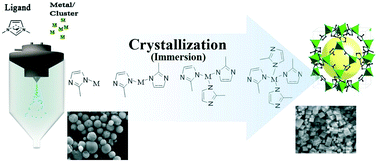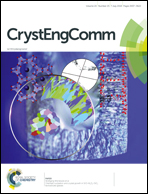Spray drying of zeolitic imidazolate frameworks: investigation of crystal formation and properties†
Abstract
High-quality zeolite imidazole frameworks (ZIF-8, ZIF-67, and bimetallic Zn/Co-ZIF) were synthesized using the spray-drying technique and the mechanism of crystal growth during the whole process is discussed. It is also demonstrated that the crystallization mechanism for N-donor containing ditopic imidazolate (IM) ligands forming ZIF structures is divergent from MOF formation applying carboxylate ligands, and their formation using the spray dry method occurs via a unique mechanism. An intermediate amorphous phase was obtained after spray drying the feed solution, and the crystallographic ZIF structure was obtained during immersion in a solvent. Several characterization techniques, such as FTIR, XRD, SEM, porosity analysis, elemental analysis etc., were applied to examine the characteristic properties of materials, including, intermediate compounds and final products. The results proved that the spray drying procedure is a facile, continuous and effective synthetic route to produce MOFs (ZIFs) in higher quantities with high-quality properties such as high porosity, a large surface area, more active catalyst sites, etc. applying a minimum amount of time and energy which is unusual in common synthesis methods of MOFs.



 Please wait while we load your content...
Please wait while we load your content...